The first commercial photography process was the Daguerreotype. And the best thing is that it is still being used today for some pieces of artwork. It’s interesting that this is one of the oldest processes in use today!
What is the Daguerreotype and When Was It Invented?
The daguerreotype technique was developed by Louis Jacques-Mande Daguerre in 1839.
Actually, Joseph Nicephore Niepce was the first person to capture an image with a camera, although it took many hours to do so and the technique was rudimentary. Daguerre was a painter before he became involved with Nicephore Niepce in a partnership.
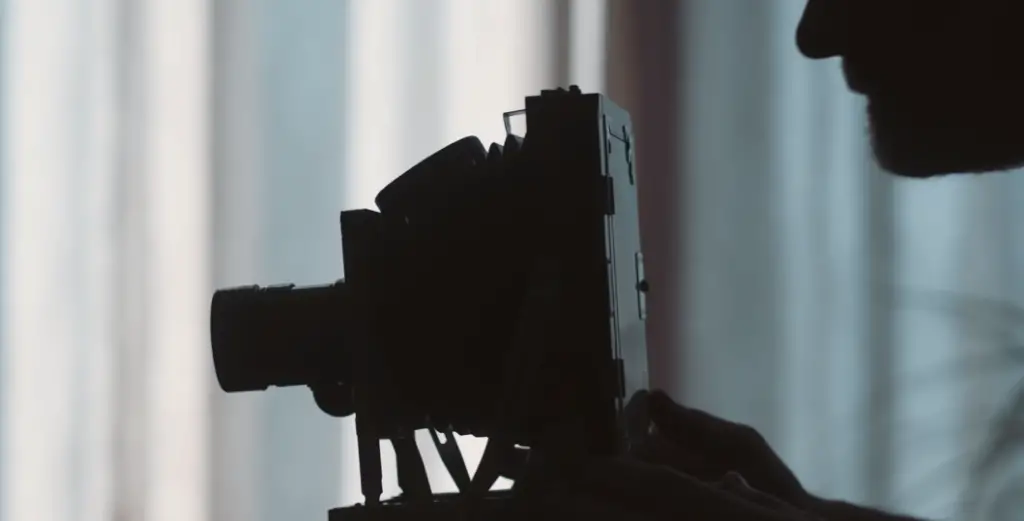
The silver plates were later utilized by Daguerre in the plate for image formation, but the process was not successful. However, he discovered the precise method for image reproduction after an accident.
One of the plates was placed into the cupboards for washing after the light exposure. When he opened the cupboard after a few hours, he discovered that the picture on the plate had been properly formed.
He studied it and discovered that the mercury vapor had caused this accurate picture formation. As a result, this calamity paved the road for one of history’s most significant camera discoveries [1].
In the mid-nineteenth century (1840), Henry F. Talbot manufactured a competing photographic technique. Instead of using metal plates, he used everyday paper that had been treated with salt and silver nitrate. His so-called Calotypes were not as sharp as Daguerreotypes, but they were more practical: they introduced photo negatives that could be duplicated.
The interesting fact is that Talbot had a dispute with Daguerre over a minor patent issue. Perhaps it’s why he also decided to capture Parisian streets with his camera.
As time went on, both procedures were eventually rendered obsolete as progress advanced, when Frederic Scott Archer developed the now-famous Collodion technique that combined the detail of the Daguerreotype with the simplicity of Calotypes. Pictures were produced on glass plates using this new technique.
Archer refused to patent his invention, considering it “a gift for the rest of humanity”. And in fact, that view proved to be quite prescient: The technique he helped create would lead to gelatin printing and, later, film, which revolutionized photo taking in the 20th century [2].
The Process of Daguerreotype
The daguerreotype is a direct-positive method that produces a highly detailed picture on a piece of copper plated with a thin layer of silver without the need for a negative. The procedure required extreme attention to detail. Until the surface looked like a mirror, the silver-plated copper plate had to be cleaned and polished.

The test plate was exposed to a drop of 3 percent potassium iodide solution, which produced a pale bluish tint.
The acid-sensitized plate was then placed in an iodine-filled box for 18 hours before being transferred to the camera.
After exposure to light, the plate was developed over hot mercury until an image formed.
To preserve the photograph, the picture was immersed in a solution of sodium thiosulfate or salt and then gold chloride toning was applied.
The earliest daguerreotypes were produced with a time of three to fifteen minutes, making the procedure unsuitable for portrait photography. The development of improved photographic lenses and modifications to the sensitization process eventually reduced the exposure time to less than a minute.
Although each daguerreotype is one-of-a-kind, it may be duplicated by redaguerreotyping the original. Lithography and engraving were other methods used to make copies. Daguerreotypes were utilized in popular periodicals and books to create portraits. At Brady’s studio, James Gordon Bennett, the editor of the New York Herald, had his portrait taken.
A later engraved version of this daguerreotype was published in the “Democratic Review” [3].
What Are the Advantages of a Daguerreotype?
- While daguerreotypes are delicate and breakable, they can endure for eternity if properly preserved;
- Because the picture plane is made of solid silver and there is no grain on the print’s surface;
- The image quality is far superior to that of paper or film;
- One of the most significant advantages of the daguerreotype is its superior level of detail;
- The daguerreotype technique was particularly well-suited to portrait photography, which led to an increase in popularity that far outstripped the calotype;
Disadvantages of the Daguerreotype
The daguerreotype process has several disadvantages. The most significant disadvantage of the daguerreotype method is that it was not possible to duplicate an image. The pictures are created as positives rather than negatives.
Because of the length of time required, the daguerreotype technique could only capture still objects since it did not appeal to amateurs:
- It was impossible to duplicate an image;
- These pictures are very delicate if not preserved correctly;
- The daguerreotype technique, on the other hand, was not meant for continuous movements. Because of the time needed to complete the process, it could only capture people who were completely still;
Daguerreotype Cameras
The first cameras used in the daguerreotype method were made by opticians and instrument makers, as well as sometimes even photographers.
The lens and the ground glass slider are located at the front of such a camera, while the rear is separated from the ground glass slide.
The sliding-box type of camera was the most popular.
The lens was positioned in the front box. A smaller, second box slid into the back of the larger one. The position of the rear box may be adjusted by sliding it forward or backward. Unless a mirror or prism were used to compensate for this distortion, a laterally reversed picture would result when the sensitized plate was put inside the camera with the lens cap removed to begin exposure. When developing film in a dark room, you had to remove the lens cover in order for it to start taking pictures.
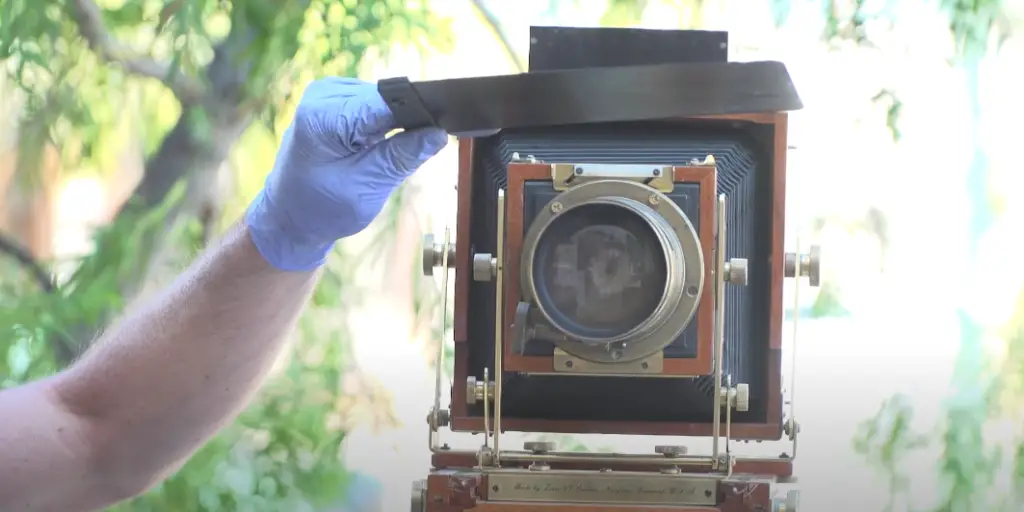
They’ve sent these cameras to many places across the world. However, only a few were in good working order when they got to their destinations. The rest of the cameras failed to function as intended. It’s possible that it’s due to shipping-related damage.
These were quite huge, unlike the latest digital cameras. The length was 10.5 inches when closed, with a width of 14.5 inches and a height of 12.25 inches. The length will double to almost 20 inches in the extended condition.
The inventor utilized plates with 6.5 x 8.5-inch dimensions. At the time, it weighed around 16 pounds. This camera model was in use for the next 10-12 years.
It was subsequently replaced by lighter version cameras utilizing compact bellows, which were used for another 10-12 years [5].
Major Issues with Daguerreotype Cameras
The Daguerreotype cameras are prone to certain malfunctions. There’s nothing unusual about that since it was the first mass-market camera on the market.
When you connect this camera to a computer, the image will be in reverse format. However, this problem was addressed later by utilizing a reversing prism or mirror in front.
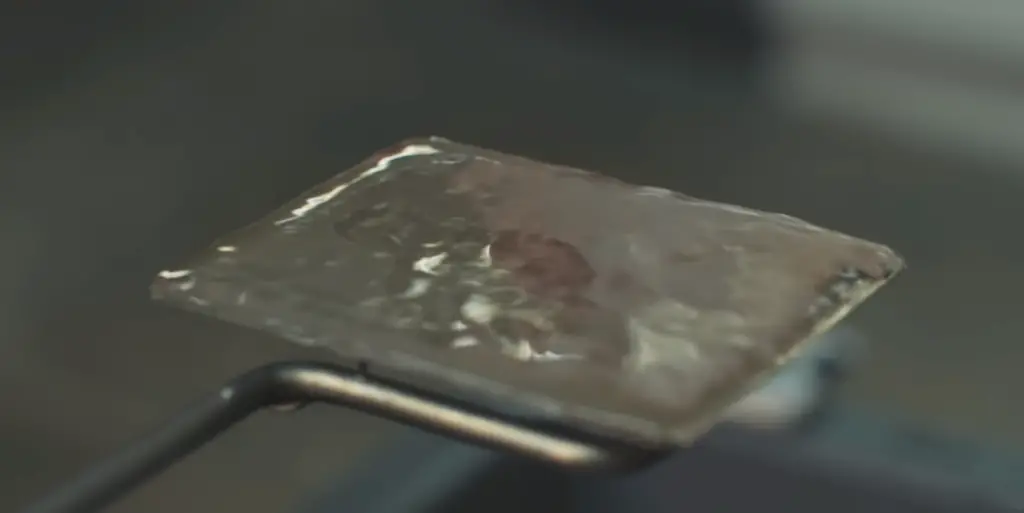
The second disadvantage is that because the plate is actually positive, you get a direct image on the surface. As a result, the finished picture may not be transferred to paper.
Others modified the original daguerreotype camera to address many of these concerns later on [6].
Daguerreotype Plate Sizes
Many plates were modified in size to different levels than the “standards” in the clinic. The difference between 1 and 2 mm is usually not significant.
The sizes of European countries are somewhat different from those of English nations. The 6×8 Parisian inch size whole plate was the originator of the European measurements, whereas the English plates were based on inches (2.54 cm).

The French inch of 1724 was not the same size everywhere (i.e., Preus inch = 2.615 cm, inch from Vienna = 2.634 cm). There are many more variations for the most and smallest sizes. These dimensions were not designated with a common term but rather represented the work of a manufacturer’s unique product.
The sixth and quarter plates were the most popular sizes:
- The Voigtländer-Petzval metal camera utilized round plates (about 10 cm diameter, usually 98 mm);
- The Steinheil (40 mm);
The Davidson camera used them as well [7].
Read more guides about photography basics:
The Evolution of Photography: From Daguerreotype to Modern Digital Imaging
The Daguerreotype process revolutionized the world of photography when it was introduced in the early 19th century. Developed by Louis-Jacques-Mandé Daguerre and Nicéphore Niépce, it was the first commercially successful photographic method. This table provides a comparison of various indicators related to the Daguerreotype process, showcasing its significance in the history of photography.
| Indicator | Daguerreotype | Subsequent Processes |
|---|---|---|
| Year of Invention | 1839 | Variants from 1840s onward |
| Primary Inventors | Louis Daguerre and Nicéphore Niépce | Various inventors contributed to later processes |
| Image Clarity | Highly detailed and sharp | Varied depending on the process |
| Exposure Time | Long exposure times (several minutes) | Gradually reduced in subsequent processes |
| Image Duplication | Each Daguerreotype unique (no negative) | Later processes allowed negative-positive duplication |
| Popularity | Highly popular during the mid-19th century | Gradually replaced by more convenient processes |
| Commercial Viability | First commercially successful photographic method | Subsequent processes further improved commercial viability |
| Image Longevity | Relatively stable and long-lasting images | Varied depending on the process and materials used |
| Process Complexity | Complex process requiring skill and precision | Later processes introduced simplified methods |
The table presents a comparison between the Daguerreotype process and subsequent photography processes in various aspects:
- Year of Invention: It highlights that Daguerreotype was invented in 1839, while subsequent processes emerged from the 1840s onwards.
- Primary Inventors: Louis Daguerre and Nicéphore Niépce are credited as the primary inventors of Daguerreotype, whereas later processes were developed by various inventors.
- Image Clarity: The table indicates that Daguerreotypes were highly detailed and sharp, but image clarity varied in subsequent processes.
- Exposure Time: Daguerreotypes required long exposure times (several minutes) compared to later processes that gradually reduced exposure times.
- Image Duplication: Unlike later processes that allowed negative-positive duplication, each Daguerreotype was unique with no negative.
- Popularity: The Daguerreotype process was highly popular during the mid-19th century, but it was gradually replaced by more convenient processes over time.
- Commercial Viability: Daguerreotype was the first commercially successful photographic method, while later processes further improved commercial viability.
- Image Longevity: Daguerreotype images were relatively stable and long-lasting, although subsequent processes’ longevity varied based on materials used.
- Process Complexity: The Daguerreotype process was complex, requiring skill and precision, whereas later processes introduced simplified methods.
This table offers a concise overview of the key characteristics of the Daguerreotype process and its impact on the history of photography.
FAQ
What was the first photographic process?
The invention of the camera obscura image projection and the realization that certain substances are visibly changed by light exposure date back to remote antiquity. Prior to the 18th century, there are no archaeological findings or narratives suggesting any attempts to record images with light-sensitive materials.
In 1717, Johann Heinrich Schulze discovered cut-out letters on a light-sensitive slurry and attempted to make the results permanent, but he never considered it.
Around 1800, Thomas Wedgwood made the first successfully documented attempt at capturing camera images in permanent form. His efforts resulted in photograms that were extremely detailed, but Wedgwood and his coworker Humphry Davy were unable to find a method of preserving them.
In the mid-nineteenth century, Nicephore Niepce was the first to successfully photograph an object inside a camera after several years of exposure, but at least 8 hours or possibly many days of exposure were necessary, and the early results were quite rudimentary.
Louis Daguerre worked with Niepce to develop the daguerreotype technique, which was the first publicly announced and commercially viable photographic process. The daguerreotype was simple to use and produced incredible images in seconds. In 1839, the world’s details were revealed for the first time, a birthday generally recognized as the inception year of useful photography [8].
How do you tell if a photo is a daguerreotype?
Here are 5 questions to ask the next time you’re looking for an early photograph [9]:
- Is the picture reflective or mirror-like in nature? Daguerreotypes have a mirror-like surface, making them resemble a hologram. A daguerreotype has a glossy and light appearance when seen from one angle and becomes negative with a smoother finish when viewed from another angle;
- Is the image whitish-gray with low contrast? It might be a tintype or an ambrotype. Although neither will have the daguerreotype’s holographic effect;
- How is the image housed? Daguerreotypes are quite fragile and, because the silvered picture may be easily damaged, they’re usually kept in a case that’s sealed behind a thick piece of glass for protection;
- Is the image on glass or metal? Ambrotypes were prepared on a glass plate, whereas tintypes were made on a thin iron plate. By placing a small magnet over an image to see whether it attracts, you can tell if it’s a tintype. This approach, however, isn’t completely accurate. There are a few ambrotypes that had a metal backing and still attracted the attention of the magnet;
- What is the case made of? The cover of a photograph, like the case of a watch, might also reveal part of the narrative. These treasured early photographs were generally kept in hinged hardwood cases embellished with embossed leather and lined with silk or velvet facing the picture. In 1852, an early resin-based thermoplastic case called a Union case was employed for the first time. With different makers crafting finely molded case designs based on the works of Old World Masters to contemporary artists, prints, and other creative work, the business of creating cases became a successful one in and of itself. These cases may be as valuable as the artwork they protect;
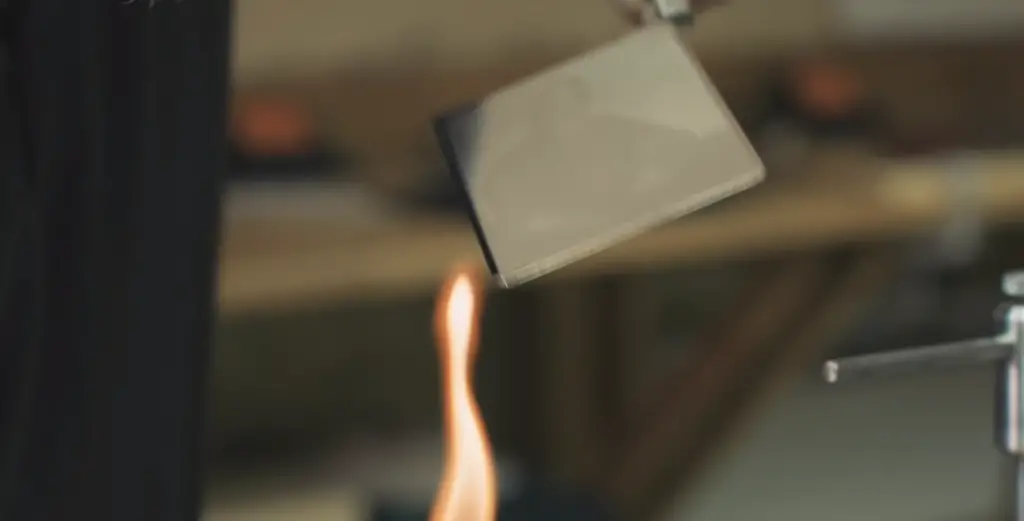
What was the very first photograph ever taken?
The photo, simply labeled “View from the Window at Le Gras”, is claimed to be the world’s first surviving photograph. And it was on the verge of being lost forever. It was taken by Nicephore Niepce in a French commune known as Saint-Loup-de-Varennes between 1826 and 1827.
Taking photos used to be considerably more difficult. To preserve this fleeting moment, Niepce wanted to employ a light-sensitive substance so that the light itself would “etch” the image for him. After much trial and error, he discovered the ideal combination. He combined some sort of mixture of bitumen from Judea asphalt with another type of asphalt and applied it to the pewter plate, according to the University of Texas at Austin [10].
Did Richard Maddox create the first 35mm camera?
No, he developed a dry plate camera. Oskar Barnack is credited with the creation of the first 35mm camera. It was originally marketed as a “miniature” camera and had high standards and cutting-edge technology, making it the “quintessential miniature camera”, according to the popular historian Hirsch [11].
What was the first stock photo?
The invention of the half-tone and its use on a printing press allowed newspapers and periodicals to reproduce photographs rather than line art in the mid-1880s. Initially, photographers were employed by staff. However, independent free-lancers eventually took over.
The first stock photo was produced in 1920 when American photographer H. Armstrong Roberts ensured that everyone featured in “Group in Front of Tri-Motor Airplane” gave explicit consent to be photographed. The use of stock photos in this way allowed the image and others like it to be profitable. In order to save money on commission-based photoshoots, publishers and marketers began looking at stock images as a less risky alternative. H. Armstrong Roberts established one of the first major stock image collections in 1920 [12].
How does the daguerreotype process work?
The daguerreotype process involves creating a unique image on a silver-plated copper plate. This is achieved by exposing the plate to light in a camera obscura (a precursor to the modern camera) and then developing it using mercury vapor. The resulting image is a highly detailed, one-of-a-kind photograph that captures remarkable nuances of light and shadow.
What made the daguerreotype process commercially successful?
The daguerreotype process gained commercial success due to several factors. First, it offered a way to create detailed and permanent images, unlike earlier photographic methods. Second, the process became relatively accessible to the general public, and photography studios offering daguerreotype portraits started to pop up in major cities. Additionally, the growing interest in capturing memories and preserving likenesses of loved ones fueled its popularity.
How long did it take to create a daguerreotype photograph?
In the early days of the daguerreotype process, the exposure time needed to create an image was relatively long, often ranging from several minutes to even half an hour or more, depending on the lighting conditions. This long exposure time made it challenging to capture moving subjects, which is why early daguerreotype portraits mostly featured people who could remain still for extended periods.
What are the characteristics of a typical daguerreotype photograph?
Daguerreotype photographs are known for their unique characteristics. They have a mirror-like surface due to the silver plate and exhibit exquisite detail in the highlights and shadows. Colors are not present in daguerreotypes, and the images are monochromatic, typically ranging from a silvery-gray to rich, warm tones. The images are also laterally reversed, meaning left and right are switched, but this effect can be corrected during the reproduction process.
When did the popularity of daguerreotypes decline?
The popularity of daguerreotypes started to decline in the 1850s with the introduction of other photographic processes, such as ambrotypes and tintypes, which were quicker and cheaper to produce. Additionally, the invention of wet-plate collodion photography further accelerated the daguerreotype’s decline due to its ability to produce multiple copies of an image. By the late 1850s, daguerreotypes were largely supplanted by these newer and more versatile processes.
Useful Video: Early Photography – Making Daguerreotypes
References:
- https://www.photographyaxis.com/photography-articles/what-was-the-first-commercial-photography-process/
- https://www.eyeem.com/blog/very-early-photography
- https://www.loc.gov/pictures/collection/dag/medium.html
- https://www.ehow.co.uk/info_8130307_advantages-disadvantages-microfilming.html
- https://www.photographyaxis.com/photography-articles/what-was-the-first-commercial-photography-process/
- https://www.photographyaxis.com/photography-articles/what-was-the-first-commercial-photography-process/
- https://archfoto.tripod.com/dagsize.html
- https://en.wikipedia.org/wiki/History_of_photography
- https://www.skinnerinc.com/news/blog/how-to-identify-a-daguerreotype-early-photography/
- https://www.businessinsider.com/first-photograph-in-history-2016-8
- https://iphf.org/inductees/oskar-barnack/
- https://en.wikipedia.org/wiki/Stock_photography






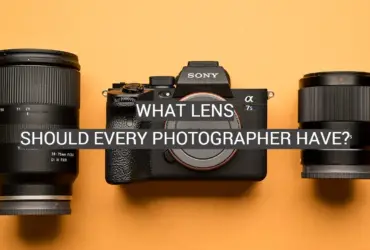



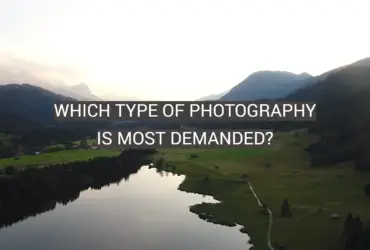
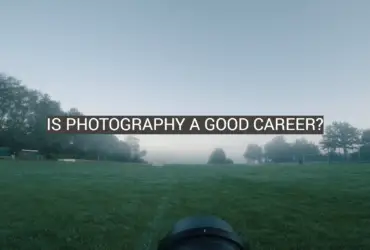
Leave a Reply